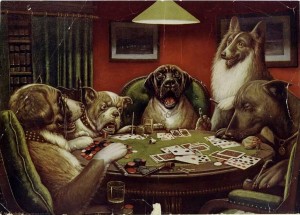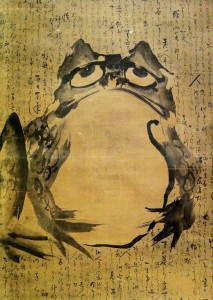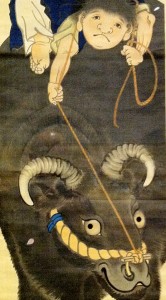They were here before us. They watched us grow up into clever little hominids. But despite half a billion years of interaction, animals and humans have never understood each other. That’s unlikely to change, even though scientists recently signed a declaration that animals have conscious awareness, just like humans. And artists—writers, illustrators, filmmakers—deserve some of the blame.

This famous dogs-playing-poker painting is actually one of 16 different images of anthropomorphized dogs created in the early 20th century to advertise cigars. Nine feature dogs around a card table. And no, the MIA doesn’t own any of them.
We’ve personified animals nearly since the beginning, in sagas and stories and myths—Stuart Little had many far stranger ancestors, most famously a pack of dogs playing poker. Lacking true understanding of animals, we’re free to project whatever feelings and motivations we want onto them. In the MIA collection, there’s the famously brutal painting The Cat’s Paw, in which a cunning monkey—of course—has persuaded a cat to retrieve roasting chestnuts from a fire. Sadistic simian.

Never trust a monkey. On view in gallery G321.
In The Audacious Eye exhibition, now open in the second-floor Target Gallery, there’s a rather charismatic frog holding its Buddha-like belly, a tiny white mouse at its feet, like a bloated plutocrat beside a peasant.

A frog (and mouse, in the bottom right corner) from “The Audacious Eye” exhibition on view in the Target Gallery.
There’s also a boy riding a bull, which appears—with an impish smile—to be getting the better of the boy.
Anthropomorphizing our beasts of burden, our cousinly critters, seems harmless enough, a timeless tactic of fabulists. To personify animals, however, is to neglect their animal-ness. Emilie Buchwald, co-founder of the notable Minneapolis nonprofit press Milkweed Editions, now publishes realistic children’s books about pets, some of which she writes herself, as Gryphon Press. She’s deliberately countering the mice-in-dungarees tropes that have long shaped our understanding of animals—which is to say, whatever we want them to be, not what they are. We treat the animals we enjoy as human babies, simply mute, and those we don’t as food or fodder or trophies—as subhuman, fair game for slaughter, the way we once justified slavery.

The bull gets the better of its rider in this painting, also from “The Audacious Eye.” As they usually do.
But now we have these scientists, a prominent international coalition, who in early fall signed the Cambridge Declaration on Consciousness, supporting the idea that animals are conscious and aware to the same degree as humans—most animals anyway, even those that long ago diverged from us evolutionarily, like birds and octopi. In science-speak, they declared, “The absence of a neocortex does not appear to preclude an organism from experiencing affective states.” Animals’ actions are intentional. They think about what they’re doing. And, more to the point, what they’re feeling.
But declaring animals to be more human-like than we’d acknowledged probably doesn’t mean we’ll treat them more humanely. On the contrary, it would seem to support further personification, when what’s actually needed is respect. Respect for animals as animals, and for the humbling fact that humans are not as unique as we’d been led to believe. Until then, it will remain an inconvenient truth.

